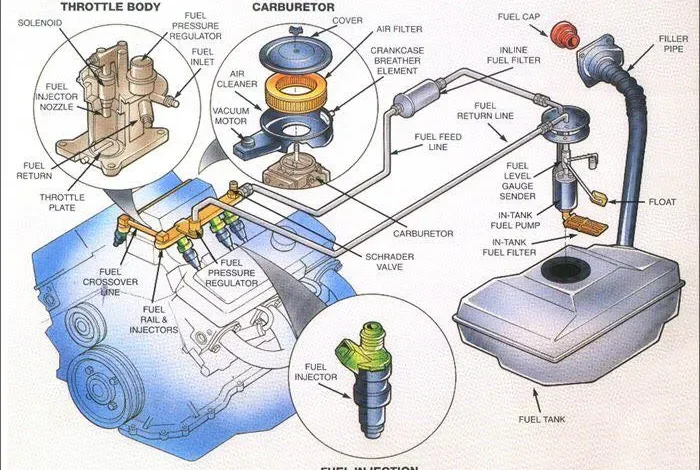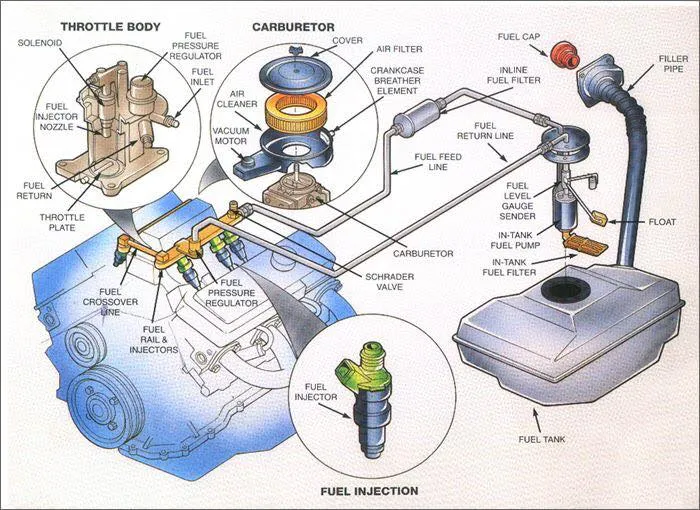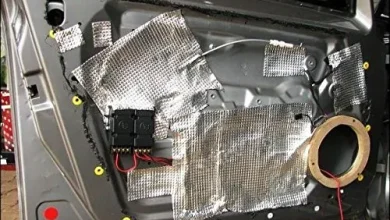How Does a Fuel Supply System Work in a Petrol Engine?

A gasoline engine’s fuel supply system provides the engine with the proper amount of fuel and air mixture for combustion. It is made up of parts such as the intake manifold, carburetor or fuel injectors, fuel tank, fuel pump, and fuel filter. Fuel is drawn from the tank by the fuel pump, which then filters it to get rid of contaminants.
The carburetor or injectors then precisely mix the fuel with air before delivering it to the combustion chamber via the intake manifold. The spark plug ignites this combination, which powers the engine.
1. What is a Fuel Supply System?
A gasoline engine’s fuel supply system provides the engine with the proper amount of fuel and air mixture for combustion. It is made up of parts such as the intake manifold, carburetor or fuel injectors, fuel tank, fuel pump, and fuel filter. Fuel is drawn from the tank by the fuel pump, which then filters it to get rid of contaminants.
The carburetor or injectors then precisely mix the fuel with air before delivering it to the combustion chamber via the intake manifold. The spark plug ignites this combination, which powers the engine.

2. Types of Fuel Supply Systems in Petrol Engines
Gravity Feed System
Gravity is used by a gravity feed system to move fuel from the tank to the engine. It’s straightforward and frequently seen in little engines or older cars with gasoline tanks above the carburetor.
Pressure Feed System
A fuel pump is used in a pressure feed system to provide pressure, which guarantees that fuel moves from the tank to the engine at a steady pace. Modern cars frequently employ this system because it reliably delivers fuel to fuel injectors or carburetors for effective combustion.
System of pumps
The purpose of the steel pipe in this fuel delivery system is to transport gasoline to the fuel pump. Through a second steel pipe, this fuel pump then feeds gasoline into the carburettor’s float chamber. Petrol is now supplied from the fuel tank via diaphragm, electrical, and mechanical pumps.
Fuel Injection System
Older carburetor systems are replaced with fuel injection systems, which precisely feed fuel to an engine’s cylinders. They optimize the air-fuel mixture for effective combustion by electronically regulating the amount and timing of fuel supply, which improves engine performance, lowers emissions, and increases fuel economy.
3. Working of Fuel Supply System in Petrol Engine
- Fuel Pump: Extracts gasoline from the tank and forces it into the engine.
- Before the fuel enters the engine, contaminants are removed by the fuel filter.
- Fuel and air combine to form a flammable mixture known as an air-fuel mixture.
- Ignition: The spark plug, which drives the engine, ignites the mixture.
- The fuel is delivered to the engine compartment under pressure by a high-pressure fuel pump.
- During the intake stroke, the intake valve opens to let the air-fuel mixture into the combustion chamber.
- In order to maximize efficiency and manage emissions, modern engines use sensors and an Engine Manage Unit (ECU) to monitor and optimize the air-fuel mixture, ignition timing, and other factors.
- Hazardous exhaust emissions are decreased by catalytic converters and other emissions control systems.
- To save fuel and reduce pollutants, the fuel supply system modifies the amount of fuel delivered during idle and deceleration.
4. What Are the Factors That Determine the Quality of Fuel?
octane rating
The octane rating of a fuel indicates how well it can withstand pre-ignition or engine knocking. Particularly in high-compression engines, higher octane fuels avoid knocking, enabling smoother engine operation and improved performance.
Composition
The blend of hydrocarbons in fuel, including the addition of additives like ethanol, is referred to as composition. Emissions, combustion quality, and fuel efficiency are all impacted by the proper ratio of these elements.
viscosity
Fuel’s thickness or flow resistance is referred to as its viscosity. Reduced viscosity promotes efficient engine operation and correct fuel atomization by ensuring smooth fuel flow through the system.
Sulfur Content
The amount of sulfur in fuel is referred to as its sulfur content. Because it lowers hazardous emissions, prevents corrosion in engine parts, and helps fulfill environmental criteria, a lower sulfur level is desired.
Conclusion
In summary, by providing the proper amount of fuel and air mixture for combustion, the fuel delivery system of a gasoline engine is essential to guaranteeing effective engine performance. Important parts are the intake manifold, carburetor or gasoline injectors, pump, filter, and fuel tank. Together, these components guarantee that gasoline flows smoothly, is adequately mixed with air, and enters the engine under ideal circumstances.
FAQs
1. How does the fuel supply system affect engine performance?
By ensuring that the engine receives the proper amount of fuel and air mixture, the fuel supply system has a direct impact on engine performance. A properly operating system facilitates smooth combustion, which enhances power output, emissions control, and fuel efficiency. Any problems with the system could result in misfires, poor performance, or decreased fuel efficiency.
2. What is the function of the fuel filter?
Before the gasoline enters the engine, the fuel filter eliminates impurities and pollutants, guaranteeing clean fuel for effective combustion and preventing damage to engine parts.
3. Why is the fuel-air mixture important?
Because it guarantees effective combustion in the engine, the fuel-air mixture is significant. While an improper mixture might result in poor performance, engine banging, or increased fuel consumption, the proper balance maximizes power, fuel efficiency, and lowers harmful emissions.
4. What are the main components of a fuel supply system?
The fuel tank, fuel pump, fuel filter, carburetor or fuel injectors, and the intake manifold are the primary parts of a fuel supply system. Together, these parts enable the engine to receive gasoline efficiently.



